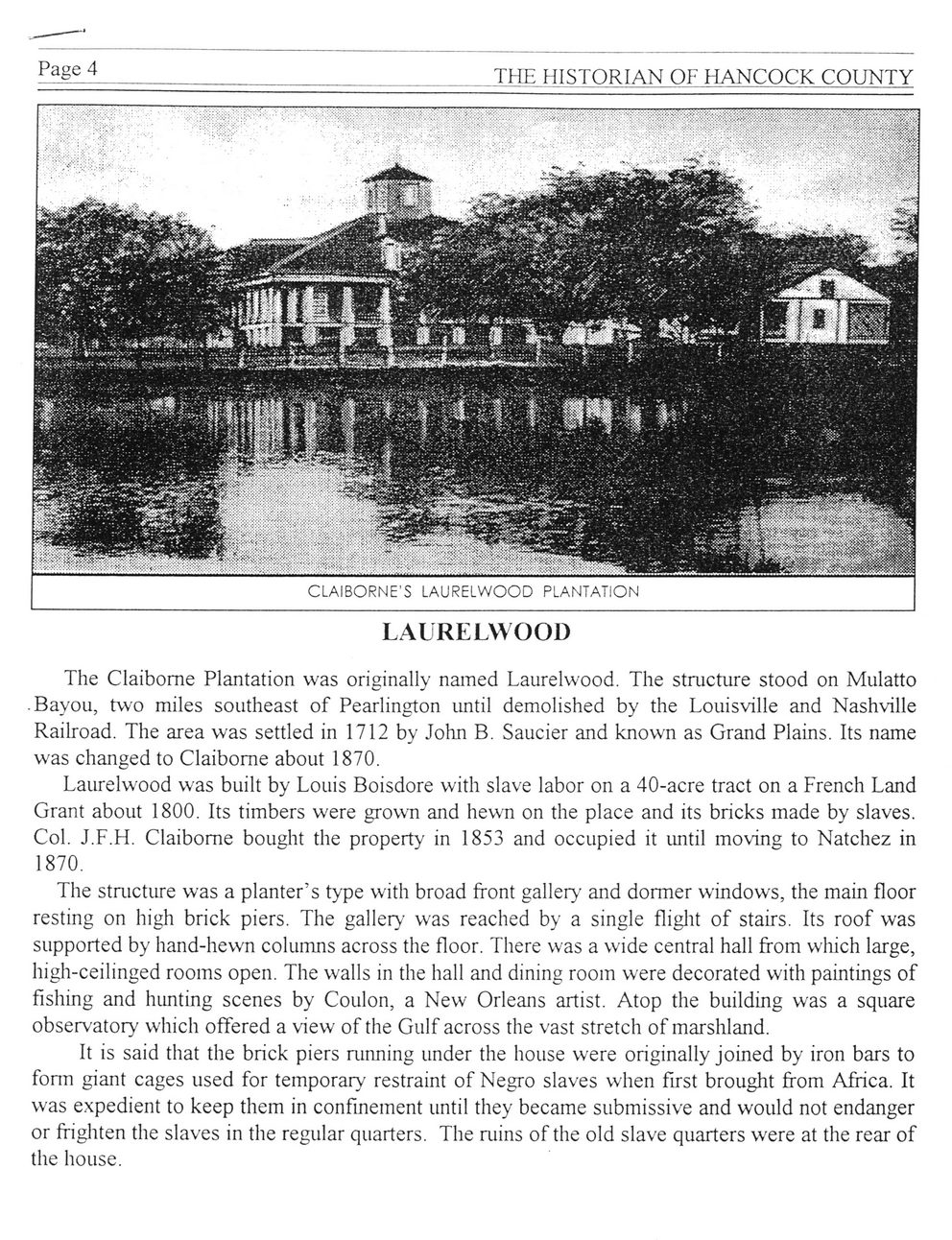This text was obtained via automated optical character recognition.
It has not been edited and may therefore contain several errors.
?*MA___________________________________THE HISTORIAN OF HANCOCK COUNTY CLAIBORNE'S LAURELWOOD PLANTATION LAURELYVOOD The Claiborne Plantation was originally named Laurelwood. The structure stood on Mulatto Bayou, two miles southeast of Pearlington until demolished by the Louisville and Nashville Railroad. The area was settled in 1712 by John B. Saucier and known as Grand Plains. Its name was changed to Claiborne about 1870. Laurelwood was built by Louis Boisdore with slave labor on a 40-acre tract on a French Land Grant about 1800. Its timbers were grown and hewn on the place and its bricks made by slaves. Col. J.F.H. Claiborne bought the property in 1853 and occupied it until moving to Natchez in 1870. The structure was a planter?s type with broad front gallery' and dormer windows, the main floor resting on high brick piers. The gallery was reached by a single flight of stairs. Its roof was supported by hand-hewn columns across the floor. There was a wide central hall from which large, high-ceilinged rooms open. The walls in the hall and dining room were decorated with paintings of fishing and hunting scenes by Coulon, a New Orleans artist. Atop the building was a square observatory which offered a view of the Gulf across the vast stretch of marshland. It is said that the brick piers running under the house were originally joined by iron bars to form giant cages used for temporary restraint of Negro slaves when first brought from Africa. It was expedient to keep them in confinement until they became submissive and would not endanger or frighten the slaves in the regular quarters. The ruins of the old slave quarters were at the rear of the house.

DeBlieux 010